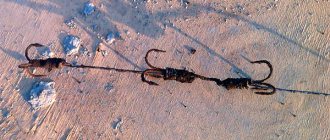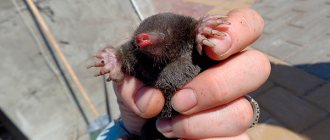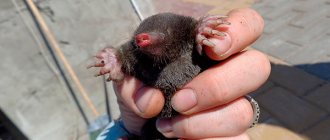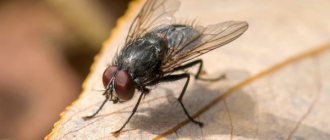Rodents in the garden and fighting them
Rodents pose a big problem for people who grow garden crops. This group includes mice, earth rats, moles, shrews, and hares. These animals cause significant damage to homestead farming. They leave behind an area resembling a plowed field, damaged trees, as well as their roots, dried seedlings, fruits and vegetables that are not suitable for consumption, as well as the gnawed film of greenhouses, greenhouses and a considerable number of other problems.
An important role is also the fact that rodents are strong carriers of dangerous viral diseases, both for domestic animals and for the human body. Rodents are carriers of a large number of infectious diseases for humans and animals. In modern society, a disease such as the plague has been completely defeated, but still, outbreaks of a dangerous disease occur. Therefore, it is not only necessary to combat these dangerous diseases, but it is also very important to take preventive measures to prevent them from occurring.
Garden plots should be kept completely clean - you should not leave food waste in the garden. Waste is sent for recycling, and the rest is burned or removed. The ripened harvest must be harvested completely, without leaving it uninvited to little friends. Be sure to treat the garden and surrounding area. Prepare the soil for planting and carry out prevention against the appearance of new rodents. During the season, try to remove thickets of weeds and all kinds of weeds, as well as dry grass in the garden.
Folk remedies for exterminating rodents
To remove rodents from the garden, their natural enemies are brought in. These include cats of certain breeds (Siamese), dogs (shepherds, mongrels and others), birds of prey (kites, owls, owls). Hedgehogs are active assistants in the fight against annoying rats and mice. In addition, hedgehogs eat many other common insects.
To prevent the appearance of rodents on the site, folk remedies are used. Typically these are plants such as:
- Autumn poisonous colchicum (allows you to get rid of rodents very quickly);
- Ledum foliage (contains many essential oils).
When using poisonous mixtures from plants, it is important to take all precautions. In particular, mandatory safety measures include the use of rubber gloves, as well as respiratory protection.
Coriander or cilantro is also rich in essential oil. It is recommended to plant the plant in garden beds and flower beds. In winter, to repel mice and rats, coriander seed stalks are laid out in rooms and vegetable stores. The dried and bundled aerial parts of the aromatic plant, tied around the trunks of young garden plants, will successfully protect them from rodents.
Dried burdock or burdock seeds can be used in storage and utility rooms. Tomato tops, which contain toxic substances, are a good way to get rid of mice. In the autumn, finely chopped tops must be spread under young plantings of fruit trees and berry bushes. In the spring, this plant protection is placed in the soil, which also improves its quality and nutritional characteristics.
Essential oil
If suitable plants are not at hand, then the appropriate essential oil can be used instead. Peppermint essential oil is considered the most effective against rats. It is added to water and sprayed on the room or wiped on floors and other surfaces.
To obtain a stronger product, add alcohol at the rate of 10 ml per 300 ml of water and 15 drops of aroma oil. The resulting mixture is used to treat cracks, baseboards, floors and other places.
How to protect your living space from rodent infestation
Thus, rodents, by their presence, certainly cause damage not only in the garden, but also in neighboring areas. Before the onset of cold weather, they move for the winter from the garden to warm buildings and residential buildings. They chew holes in walls and furniture, and destroy food in storage. If you do not deal with pests in time, then vegetable seeds, grains, and seed potatoes will be destroyed. They also do not disdain electrical wiring, damage to which can cause irreparable damage to your entire household. To protect your home, you can use the following well-known effective means:
- Lubricating areas with a mixture based on naphthalene and peppermint in areas where rodents actively move;
- The use of poisoned bait based on quicklime with the addition of granulated sugar;
- Placing poisonous bait made from semolina with a putty mixture near rodent burrows.
Fumigation of the premises followed by general cleaning helps a lot. Among garden owners, wood ash is popular in protecting against mice. It is scattered around the perimeter of the house and other outbuildings. Do not forget that by using highly toxic toxic substances, we endanger both the environment and our pets. Therefore, give preference to products that are sufficiently effective than herbal and folk remedies.
Measures to prevent re-infestation of rats
To prevent repeated rodent invasions, you must:
- cover ventilation outlets with fine grilles;
- seal all cracks and rat passages with concrete mixed with glass;
- strictly monitor food products, which must be stored in tightly closed containers;
- remove garbage and food waste in a timely manner;
- clear the area of fallen leaves and debris;
- use fragrant herbs for preventive purposes.
How to get rid of rats and mice in the garden
Protecting trees from rodents
The most difficult thing is to control rats in the garden. Since they are the most intelligent of rodents, rats do not appear in the field of vision of a person, having well studied his way of life. They come out of their burrows only in the dark. They make their burrows deep in the ground, as a rule, in places inaccessible to humans, and therefore it is very difficult to track down their home. Rats reproduce quickly. Up to 5-6 times a year, 10-12 cubs. And this is a big threat to the entire household.
Fighting mice in the garden also causes a lot of trouble. They are attracted here by the variety and availability of food and the soft soil, in which they easily dig underground passages and burrows, where they not only reproduce, but also store their stolen supplies. Moreover, these moves spoil the appearance of the site. But what’s most unpleasant is that they become breeding grounds for various parasites. Without the proper experience, killing mice in the garden is a big challenge for seasoned gardeners, but even more so for beginner gardeners.
Every good owner tries to find the most effective control method to protect the site from unwanted guests. Various bleaches are used, poisonous baits are laid out, and special treatment of plants is carried out. Repellents such as creolin, naphthalene, and diesel fuel are often used as rodent repellers. Sawdust or cloth is moistened with these odorous substances and scattered over the surface of the soil, and the cloth is hung on tree branches.
Poisoned baits are placed in rows of berry bushes, in the vineyard and in tree trunk circles. But there is a danger of poisoning pets and other noble animals. Therefore, it is best to make safe baits.
For maximum repellence and protection from pests, it is necessary to treat the trunks and shoots of fruit and berry crops with chemicals. The vines and branches, as well as the soil around the bushes and trees, are subject to irrigation. A solution of 5% iron sulfate is used for treatment, and wood ash is used for fertilizer.
Since rodents do not hibernate in winter, they are constantly looking for food. Therefore, hares, rats and mice can cause great harm to the winter garden. To protect the winter garden from rodents, tree trunks are whitewashed with the addition of repellent drugs. But because 100% - whitewashing trees will not protect; the trunks need to be wrapped in mesh or burlap. Wrapping it with cut plastic bottles also helps. It is convenient to use a metal mesh.
What you need to know about mice?
Now we know what danger small rodents pose, but I would like to note a few more interesting points:
- The size of the animals is 6-10 cm, they have an excellent sense of smell, hearing, touch and taste.
- Running speed – 12-13 km/h, long jump – up to 75 cm, high jump – up to 40 cm.
- The animals are good at hiding, and a medium-sized animal can crawl through a 10-mm hole without any problems.
- In search of food, rodents do not go long distances from their nest and do not share their territory with rats.
- The incisor teeth of mice grow throughout their lives, and to prevent them from growing into the jaw, the animal must constantly chew something.
How is professional processing better than doing it yourself?
How to deal with garden and garden rodents can be found on many Internet sites. And yet, no matter how good the traditional methods of controlling rodents are, the best helpers in this will be the employees of the SES. Carrying out deratization in the garden is a real salvation for those whose garden has been chosen by earth rats and other small rodents. The two main qualities of any pest are rapid adaptation to negative conditions and active reproduction. Therefore, people need to invent and develop new means and methods to combat them. And in order not to waste your precious time, we suggest turning to professionals with this problem. Our company always has the most modern and highly effective scientific achievements in this field at its disposal. Our employees will always listen to you carefully and come to you on a day and time convenient for you. Depending on the assessment of the condition of your garden plot, which our employees will professionally assess when they first visit you, we will offer the most effective methods of dealing with your “uninvited guests.” Depending on the complexity of the work performed, you will be offered prices that will not disappoint you, but, on the contrary, will greatly surprise you.
If you do not take care of the issue of exterminating them in a timely manner, you will end up with a damaged lawn, undermined plant roots and an irrevocably ruined harvest. Rodents in the garden and the fight against them do not pose a problem for professionals in their field. To the question - “How to deal with garden and garden rodents?” - they will give the best and most reliable advice.
Burnt remains
Another class of substances that rats cannot tolerate are burnt or burned remains of certain substances:
- Burnt feathers or down. You can burn any feather, but duck down has the most repulsive smell. The burnt remains are mixed with starch and scattered around the house.
- Burnt rubber. Rats are afraid of this smell and immediately leave the area where it is smelled. Pieces of rubber are placed in a metal container, poured over with flammable liquid and allowed to burn. The burned parts are laid out around the house. The container retains the smell well, so it is also used for repelling.
But the most effective protection is provided by burnt rat fur, which causes its relatives to feel a strong sense of danger. This method has been used by people since ancient times. To do this, the skin must first be removed and then set on fire. The resulting residue will be the most effective rat repeller.
How we are working
This problem cannot be solved with a raid. Our work begins with a preliminary visit of the pest control agent to the site. During this visit, the specialist assesses the degree of infestation of the area with rodents, and also develops possible options for exterminating rodents. After the customer approves the plan for the upcoming work, the extermination stage of deratization begins in the fight against rodents in the garden plot. The following methods of control exist:
- Mechanical traps: arc traps, live traps and other bait-based devices;
- Chemicals are used that, when entering the rodent’s body, cause immediate or delayed death. It is important to note that in our work we use products that are safe for people and do not accumulate in soil or plants;
- Ultrasonic repellers and preparations based on repellents, which allow you to rid an area of rodents without directly destroying the latter. They also serve as an excellent barrier to pests from neighboring gardens.
A couple of weeks after the completion of the main work, specialists conduct a control check on the site. And if rodents are found on it again, deratization is carried out again, but this time free of charge and with more powerful means.
By giving our company the opportunity to solve your problem with rodents, the fairy tale by children's writer Selma Lagerlöf, entitled “Nils's Wonderful Journey with the Wild Geese,” where the main character rids the castle residents of a horde of rats with the help of a magic pipe, will become a reality for you.
Vegetable garden cultivation
| Up to 10 acres | From 6500 rub. |
| From 10 to 30 acres | From 9500 rub. |
| From 30 to 50 acres | From 13500 rub. |
| From 50 to 80 acres | From 16,000 rub. |
| From 80 to 100 acres | Negotiable |
| Price for one-time processing |
We are waiting for your suggestions!
Additional Information:
- Deratization on the territory of the dacha
- Extermination of rodents in the yard
- Exterminating mice in a cottage
- Removing rodents from the lawn
Preventive measures
The following preventive measures will help prevent the appearance of earth rats on the site:
- timely weeding, removal of plant debris (fallen leaves, rotten fruits, dead wood);
- keeping the area clean (there should be no garbage or food waste);
- deep digging of beds and row spacing in the fall after harvesting;
- regular inspection of the area for the presence of burrows;
- the compost pit should be equipped in the far corner of the site, away from the beds.
When harvesting, it is very important to check that there are no root crops left in the ground, and that there are no remains of herbs and vegetables in the beds. A cat or dog periodically walking around the area will also help protect against rodents.
Ultrasonic repeller
Ultrasonic rodent repellers
A modern invention that operates on the basis of ultrasound. The human ear does not feel vibration, so the operation of the device does not affect one’s well-being or health. The device runs on city electricity or batteries. To prevent rodents from getting used to ultrasound, it is possible to periodically change the frequency.
The area of action depends on the power of the device. Carpets and furniture drown out the background. It is recommended to place a repeller in each room so that the negative background is present throughout the house. It is recommended to install the devices for 1 month, then take a break.
The ultrasonic repeller acts on the nervous system. It can drive away rats in 3-4 weeks. The animal feels constant discomfort. The only way for a rodent to get rid of poor health is to escape.
On a note!
Ultrasonic rodent repellers are recommended to be used in parallel with other control methods. There is no exact information on how ultrasound affects pets. If you have a hamster, guinea pig, or decorative white rat in the house, you should stop using the device.
Ways to fight
Now, knowing well who we are dealing with, we begin to act actively. The fight must be waged in two directions: prevention and direct destruction or expulsion. In order to correctly decide which method of warfare to choose, it is necessary to clarify some points:
- Room size and type.
- Volumes of food left for storage.
- The presence of children, sick people and pets in the house.
- Number of rodents detected.
No. 1. Chemical (poisons)
The method of chemical destruction of animals can be called one of the most effective. There are a considerable number of different poisons, which are:
- Inorganic (contains heavy metals, causes severe intoxication, large quantities are required).
- Organic (a small amount is enough).
- Cumulative action (gradually accumulate in the rodent’s body, leading to disruption of the functioning of various organs of the animal and their subsequent failure).
- Fast-acting (acts on mice almost instantly).
Chemical mice control agents vary in release form . It can be:
- Powders are indispensable for preparing baits that will attract rodents to a meal of poisoned products.
- Gels and creams can attract the attention of many rodents at once. Chemicals with flavor additives and various strong flavors can be used for a long time without loss of effectiveness.
- Tablets and briquettes , as a rule, have a bright color and an attractive (for mice) odor. They are convenient to use in places that are difficult for humans to reach.
- Liquid poison is mixed into the water, while limiting the access of pest animals to other sources of drinking.
- Sprays and aerosols are mainly used by humane owners of dachas, vegetable gardens and gardens. Drugs whose active ingredients are methyl salicylate and nonivamide cause nausea, vomiting in rodents and force them to retreat from the area they like.
It is important to consider that repellent substances do not poison mice or reduce their numbers, but simply force them to leave a specific territory, and therefore move to another
The most effective poisons include:
- “Death of the Rat”, “Biorat”, “Storm”, “Nutcracker”. The active ingredient in the drugs is brodifacoum , which causes suffocation and internal bleeding. Animals die 7 days after taking the bait.
- “Zookoumarin Neo”, “Zoopasta” is an anticoagulant , a highly toxic poison, and is a mummifying agent.
- “3D-Ratsid”, “Antirodent”, “Blockade”, “Absolon”, “Clean House”, “Rattidion” are much more toxic than the previous drug; their active ingredient is bromadiolone , a second-generation anticoagulant.
- “Ratindan”, “MEF”, “Rotendant” are some of the most toxic drugs, the active ingredient of which is diphenacin . In powder form, it is dangerous for both animals and people.
- The “Efa” remedy is grains soaked in poison. The basis of the highly toxic poison is ethylphenacin , so it is important that the product does not come into contact with human skin. The drug has proven itself well with long-term use.
- “Tsunami”, “Tsunami-Extra”, “Ratol” are considered one of the best accumulative products for rodent control. The active basis of special tablets disrupts the functioning of the circulatory and cardiac systems of the rodent, while the drug is harmless to humans.
Products such as “Mortorad”, “Storm”, “Mouse Death”, “Nutcracker”, “Rat Death” are positioned by stores as mummifying. In any case, these are the five most effective means for use in the countryside, if you do not take into account the drugs used by professional specialized services: “Goliath” or “Deratomin”.
For those who decide to fight rodents using poisons, it is important to observe the necessary precautions as much as possible, carefully study the manufacturer’s recommendations, as well as carefully prepare the room itself and be sure to take care of the safety of people and pets
Recipes for poisons “from the people”:
- Sugar – 1 part, flour – 2 parts, gypsum – 6 parts (you can mix flour and putty) or make a mixture of sugar, flour and soda.
- Powdered sugar – 1 part, flour – 2 parts, quicklime – 6 parts.
The baits made in this way are thrown to the mice and they eat them with pleasure. Be sure to put water nearby. When the mixture enters the animal’s stomach, in the first case, it hardens, clogging the digestive organs; in the second, it corrodes their mucous membrane.
- The cork stopper from wine or champagne is finely chopped and fried in oil. The mouse eats this treat and gets indigestion and a sad end.
- The same cork can be crushed and “camouflaged” by mixing it with some kind of cereal.
- Barium carbonate (5 g), flour (20 g) and melted fat (30 g) are mixed to produce a poisonous mixture from which the balls are formed. The latter are best placed near rodent burrows.
- Prepare a “treat” from gypsum, dry potatoes and cinnamon.
- A mixture of dry putty and flour (1:1) with the addition of salt and water.
- Foam rubber cut into small pieces and soaked in aromatic sunflower oil is suitable.
No. 2. Repellers
Technology does not stand still and many companies offer a considerable selection of devices that are quite effective in the fight against small rodents and at the same time completely safe for both animals and people. When choosing a suitable device, you need to take into account its main characteristics:
- Safety and ease of use.
- Availability of a power source.
- Signal frequency.
- Maximum effective range.
We are talking about special repellers:
Ultrasonic
The ultrasonic pulse that the device sends disorients the mice, causes them to panic, fear and forces them to leave the area where the seal is spreading. Humans cannot hear or perceive high-frequency vibrations, but they cause a lot of inconvenience to rodents. The main advantages of such devices include:
- Convenience and ease of use.
- Use for a long period of time without interruption.
- Environmentally friendly.
- Safety for humans and pets (note: ornamental rodents are at risk).
- As an added bonus, it is effective against mosquitoes, flies and other flying squirrels.
To prevent small pests from getting used to the generated sound, as a rule, its frequency periodically fluctuates between 20 kHz and 70 kHz. In addition, models have been released that are equipped with light indicators - flashes that appear randomly not only blind mice, but also do not allow them to navigate well in space.
They have high-frequency devices and small “ cons ” that you need to be aware of when choosing a particular device:
- A large number of textiles, upholstered furniture, paper products and other similar items in the room reduce the efficiency of the device, since they all actively absorb ultrasound.
- The pulse that the repeller sends cannot pass through the walls, but is only reflected from them, so the action of the device is limited to the walls of a particular room.
Conclusion: the fewer obstacles in the path of ultrasound, the better. And there is no need to rush into results. Despite the fact that the device begins to operate from the first minutes, to completely expel rodents, the repeller will require constant operation for several days, or even weeks.
The following received good ratings from users:
- Model range “Tornado” and “Typhoon” (the devices have a wide frequency range and are effective when working in both large and small rooms.
- The “Grad” series of devices (have a distinctive sound sequence, can operate from different power sources (mains, batteries, accumulator), some devices additionally have bright LEDs).
- The Chiston line of devices (using a continuous supply of a powerful signal, which allows you to expel rodents as quickly as possible).
- “ElectroKot”, “Ecosniper” (working in several modes is possible - pulsed, continuous and combined).
- "Weitech" (easy to use, affordable, compact in size, universal mouse and insect repeller) and many others.
Electromagnetic
For the operation of electromagnetic devices, it is necessary to have electrical wiring through which impulses are transmitted. The radiation emitted by the devices affects rodents in a similar way to ultrasonic repellers: they cause anxiety and discomfort in animals, and panic attacks force mice to leave their homes. Advantages:
- Environmentally friendly and free of harmful substances.
- Long work without breaks.
- No absorption of impulses by upholstered furniture and textiles.
- Large coverage area (without compromising the operation of various electrical appliances).
- The ability to influence rodents in the voids of walls and ceilings.
- Strike at crawling insects.
As for the shortcomings . The main and very significant problem is the need for wiring, which must be laid along the perimeter of the entire room, in extreme cases - at least along the longest wall. If this condition is not met, all efforts will be in vain.
The most popular and effective models:
- “Riddex Plus” - the device has a plastic impact-resistant case, is resistant to humidity - up to 90% and temperature changes - from -35 to + 45 ° C, the repeller coverage area is 80-200 sq. m.
- "EMR-21" is a reliable device with a light indicator, operating within a radius of 230 square meters. m.
- “Digital” is a budget version of the repeller with a range of 80 square meters. m. Perfect for a summer cottage.
- “Range 3”, “Yastreb 200” is a convenient compact model with enough power to be used in both small and large areas.
Combined
Obviously, the best choice is combined devices that combine all the “advantages” of the two previous varieties. And, although the price of the proposed devices is a little higher, it is more than compensated by their versatility and speed of action. It's worth noting here:
- "Chiston-2".
- "Tornado 1200".
- Riddex Quad.
- "Ultrasonic Rodent Repeler"
No. 3. Mechanical (traps and mousetraps)
Mechanical methods of exterminating rodents today do not lose their relevance and, on the contrary, are being improved and modified. The list of designs is considerable and I would like to take a closer look at it. So:
Mousetrap with frame
A well-known device for catching rodents. A steel frame, which kills the rodent, and a spring are fixed on a wooden base (can be plastic or metal). This design has been well known to everyone for a long time, so many people know that it can often:
- Jam.
- Simply record a “false call” while the mouse manages to drag away the bait.
- Not particularly effective in case of massive pest infestations.
In addition, we should not forget that the animal’s corpse must be removed from the mousetrap and disposed of. But not everyone can do this.
Tube mousetrap
This invention can be safely used by people who experience panic horror, both in front of living and dead animals. An opaque plastic pipe, a bait and a mechanism that does not allow the animal to get back out are simple components, the effect is obvious, and the visual result does not cause disgust. An additional design element in the form of a striking device is possible.
Swing trap
This device is called differently: “swing”, “springboard”, “water captivity”, etc. But the principle of operation is the same everywhere, and the trap itself is quite effective - in a short period of time you can catch a large number of small rodents. Making the design yourself will not be difficult. For this you need:
- Any container such as a bucket, spacious, which will serve as the basis of the trap.
- The lath is thin, you can even use a ruler.
- A knitting needle or wire that does not bend.
During the assembly process, the wire is securely fixed perpendicular to the rail. The resulting element is installed on the bucket so that the “swing” ruler touches only one of its edges. A rodent bait is attached to its other end. And then the structure is installed in the right place so that the animals can freely enter the springboard from a stable side and move straight into the trap. Very often the bucket is not left empty, but some water is poured into it.
Trap with loop
The device is really very simple in design. As a rule, this is a wooden block with one or more holes. Loops made of very thin but strong wire are fixed with a thread inside the “mink”. Since the mouse will have to chew the thread to get to the “yummy”, it itself will launch the mechanism of its destruction - the noose will kill it in any case.
Traps and cages
Both traps were borrowed from hunters:
- In the first case, we are talking about mini-analogues of traps for large predators. The design includes: a solid base, which has sharp teeth around the perimeter, a cocking mechanism and a bait located inside the device.
- In the second, it is the most ordinary cage made of steel, small in size, with a hook inside for securing treats and an automatic door. The latter is triggered when the mouse wants to steal food.
The second device, unlike the first, refers to humane methods of getting rid of rodents. The captured animals are not physically harmed and can be released into the wild as far as possible from their home.
One of the popular models is the “House” plastic trap. The tube has a certain bending angle and two doors - at the beginning of the structure and at the end. In the depths, near the back cover, some mouse delicacy is placed and the front door opens. When the rodent approaches the bait, the front door slams (automatically). All that remains is to release the small pest in time.
Bottle trap
A simple device that any craftsman can do. A glass or plastic bottle with a volume of 0.5 to 2 liters is suitable, inside of which you can pour a little sunflower oil, sprinkle some seeds, and, in general, put bait. Then the bottle must be installed at an angle so that the neck is higher, fixed, and you can even make some kind of steps for the mice. Slowly, but confidently, the goal will be achieved.
Live trap jar
To organize a trap, you need to take a glass jar and a coin or a piece of cardboard with a small notch. The jar is turned upside down, a treat for the animal is placed inside, one edge of the jar is raised and placed on the edge of a coin or a vertically placed piece of cardboard. Everything must be done very carefully, because the structure turns out to be very unstable and it will not be difficult to upset the balance even for a small mouse, which is immediately caught.
Electric mouse trap
Today, not the last place among the effective traps is occupied by electric mousetraps. They are much better than their mechanical brothers and sisters. In order for the trap to start working, you need to fill it with bait and connect it to the power system (electrical network). There are live contacts inside the device. The animal, making its way to the treat, will certainly touch them and be killed by an electric shock. Most models are equipped with signal LEDs to notify you when the device is triggered.
Glue traps
When talking about methods for catching mice, we cannot ignore glue traps. Such devices are not humane, but they are among a number of popular and budget-friendly methods of exterminating rodents. Everything is quite simple. Thick cardboard strips are covered with a layer of fragrant glue. Moreover, the aromas can be very diverse, the main thing is that they attract animals. And those, following the smell, fall into a trap - a sticky layer from which they are not destined to escape.
In many cases, you can use not only ready-made traps, but also separately glue in a tube for rodents. You can apply it in different places and be especially careful not to get caught yourself.
No. 4. People's
Everything that is not manufactured on an industrial scale in finished or semi-finished form can be classified as folk methods of fighting mice. The most popular options are listed below:
- Wood ash greatly irritates the paws of animals, and they also find its smell unpleasant. Therefore, if you scatter it on mouse paths and hard-to-reach places, rodents will begin to avoid them.
- The burdock thorns will not allow the animals to enter the dacha, since they firmly cling to the animals’ fur coat, which does not make the latter happy at all.
- It would not be superfluous to treat the entrances to burrows and walls with bleach .
- branches of wild rosemary, black currant or coniferous trees not only directly next to the burrows, but also to insert them deeper into them. Such a scented barrier will repel rodents, and spruce or pine paws will also become an obstacle to movement.
- Mice cannot tolerate essential oils of wormwood, mint or elderberry If you put rags on which the listed oils are applied into the minks, most likely the mice will run away from their “familiar nests” and will definitely not appear in these places for a couple of months. This remedy is excellent for prevention.
- hot pepper (the so-called “smoking”) gives good results A large pepper pod is wrapped in several layers of newspaper, placed in some container (for example, a basin) and set on fire. There is no need to start a fire, but it is advisable to let the smoke sit in the room for a couple of days. The method is relevant for expelling rodents from basements and cellars.
- Similar to the previous method, the desired result can be achieved using a sulfur bomb. After its smoldering, the room is not ventilated for 1-2 days, and the mice flee as if “from a sinking ship.”
- You can scare away pests using Vishnevsky ointment or birch tar . You just need to treat the baseboards, thresholds, and the lower part of the furniture with them.
- To protect the area from small rodents, the following are suitable: reeds, pine branches, fabric soaked in kerosene or creolin, sawdust, tomato tops and elderberries. Along the perimeter of the territory it would not hurt to plant spurge, black root, cilantro (coriander), wormwood, mint or black currant.
- In the house, it is worth laying out on bedside tables, in cabinets, in corners or along the walls: garlic, tansy, chamomile, drop a little peppermint alcohol or peppermint oil.
No. 5. Biological
This paragraph is dedicated to animals that can be attracted to catch rodents. There are, in fact, quite a few options: cats, ferrets, hunting dogs (fox terrier, dachshund).
- First of all, of course, we are talking about cats and cats. By the way, it has been noticed that cats are more responsible hunters than cats. And the simplest mongrel cats, without regalia or family coats of arms, do the best job with this kind of work. But those who want to have a purebred animal and take it with them to the dacha to catch mice should pay attention to such breeds as Siberian, Kuril Bobtail, Russian Blue, Maine Coon, Bengals and Siamese, British Shorthairs, Abyssinians, etc.
- Ferrets are also super mousecatchers . These small, very nimble animals are a nightmare for small rodents. These animals can easily find a common language with dogs and cats, but if there are chickens on the farm, you should immediately refuse the helper of the mustelid family, without even thinking about it.
- Many representatives of the dog world are excellent rat catchers, but if a mouse comes across their path, it has no chance of salvation. The most avid hunters of small rodents are: some breeds of terriers and dachshunds, miniature pinschers, fox terriers, and rat catchers (Andalusian and Prague rat rats).
If someone wants to really surprise all their neighbors, let them get themselves a pet owl , which is also not averse to profiting from small animals. The main thing is to provide that both a kitten and a small puppy can fall into her paws, but there will definitely be no mice.











